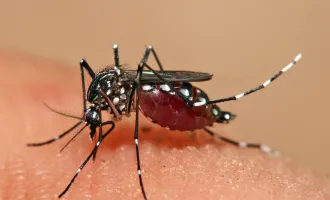UCSF Outreach Programs Promote Diversity and Science
“I have this duty to respond to students who are inquiring about the universe as a career path, to respond to them in the way that Carl Sagan had responded to me,” remarked Neil DeGrasse Tyson, who has recently rebooted the late astrophysicist’s TV series Cosmos.
In the first episode, he paid tribute to his mentor with a touching story of Sagan’s invitation to spend a day with Tyson, then a mere “17-year-old kid from the Bronx” who was applying to Cornell University with dreams of becoming a scientist.
“At the end of the day, he drove me back to the bus station. The snow was falling harder. He wrote his phone number, his home phone number, on a scrap of paper, and he said, ‘If the bus can’t get through, call me. Spend the night at my home, with my family.’
I already knew I wanted to become a scientist, but that afternoon I learned from Carl the kind of person I wanted to become. He reached out to me and to countless others, inspiring so many of us to study, teach and do science. Science is a cooperative enterprise, spanning the generations.”
Mentorship and outreach are critical to the development of young scientists, as DeGrasse Tyson points out with this anecdote, particularly for those who are traditionally underrepresented in the field.
As a leader in health sciences, UCSF has presciently made outreach a cornerstone of its mission to serve the public. Annual programs, such as Inside UCSF, as well as independent efforts by dedicated students have helped fulfill this mission. This year, two such events took place in the same weekend of April 25, aimed at reaching out towards both college and high school students.
Inside UCSF
On April 25, 86 students flocked onto Parnassus campus to be a part of Inside UCSF. Participants of the annual outreach program have described it as “life changing, mind blowing and a once in a lifetime opportunity.”
Inside UCSF began eight years ago to give two- and four-year degree students an in-depth introduction to careers in health and science. Tours, information sessions and hands-on labs allow participants to get a sense of what it’s like to be a student at UCSF. Prospective students also get multiple opportunities to network with current students, staff and alumni.
“The students walk away with a better sense of self and a better understanding of what it takes to be a professional student here at UCSF,” according to Paul Day, events and communications manager of the Office of Diversity and Outreach. The office has hosted this program for the past three years.
Inside UCSF is a particularly important opportunity for students who are traditionally underrepresented in the health sciences. In 2014, this demographic made up nearly 60 percent of participants, and over 40 percent of participating students were first generation.
“Empower yourself to fulfill your dreams, no matter what obstacles you face,” urged this year’s guest speaker Ramon Resa, MD, a UCSF-Fresno residency alumnus. Heeding this message, many recent participants of Inside UCSF have been accepted into the Schools of Medicine and Dentistry, and others work in labs on campus. One student’s research has even given him the opportunity to travel to Burkina-Faso, his home country.
High School Outreach Conference
More than 300 high school students from schools throughout the Bay Area arrived on campus on April 26 for a program similar to Inside UCSF. Students rotated between demonstrations held by representatives from each of the schools to learn about the multitude of health sciences careers available.
First-year medical student Katherine Wei, for example, helped put on a skit to demonstrate the process of treating a patient who had suffered a heart attack. They showed the program participants representative X-rays, EKGs, lab images and videos of the appropriate procedures to perform. The physical therapy demonstration by third-year PT student Andrew Tran led participants through a patient case, therapeutic exercises and appropriate use of assistive devices.
Impressively, HSOC is organized entirely by student volunteers. This year, second-year dental student Valentina Zahran led the volunteers, sending student representatives from each school to recruit directly from high schools in and around San Francisco and coordinating these demonstrations. To make the demonstrations more cohesive, Zahran also decided to give the event a superhero theme.
The Graduate Division’s superhero was Wolverine, and appropriately, third-year Developmental and Stem Cell Biology (DSCB) student Matt Donne facilitated a discussion about regenerative medicine. “We discussed the body’s innate capacity to heal itself like Wolverine—how we are learning about these natural processes and how we are harnessing this potential both now and in the future.”
Donne encouraged the students to the guide the discussion. “Ultimately, what helped the most was the students asking questions.” He found that the most important thing at an outreach event such as HSOC was not teaching science but showing students what it might be like to pursue a health sciences career. “I told them what grad school was like and what careers were available afterwards. I wanted them to remember having fun.”



